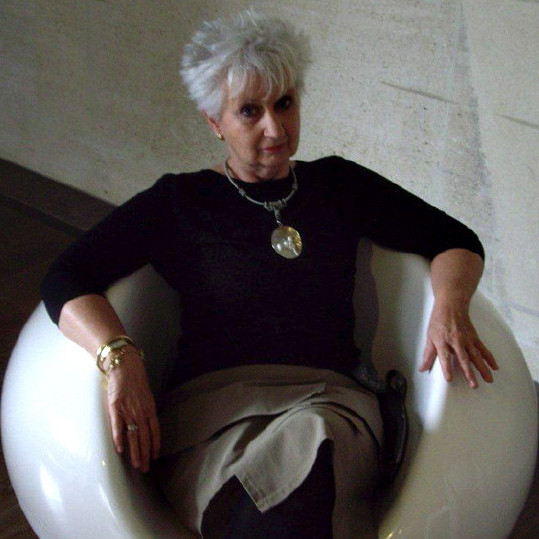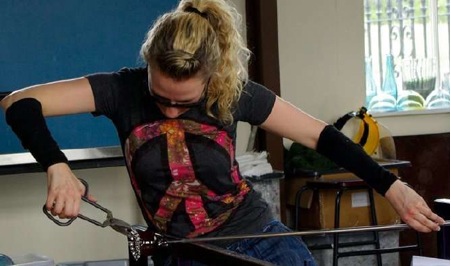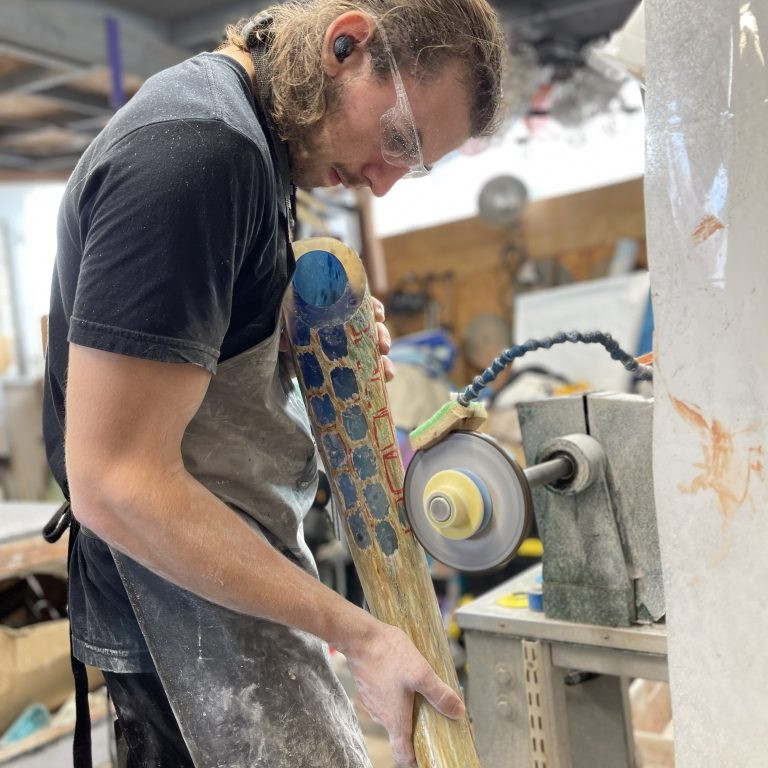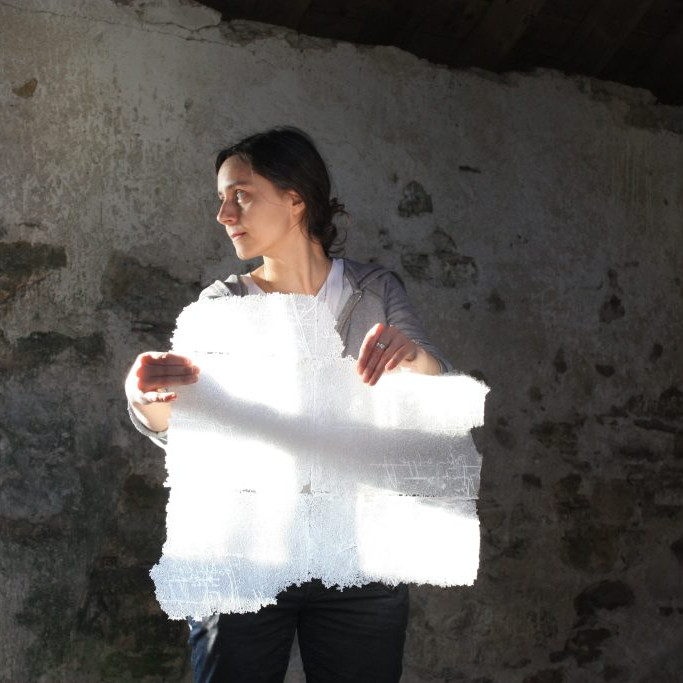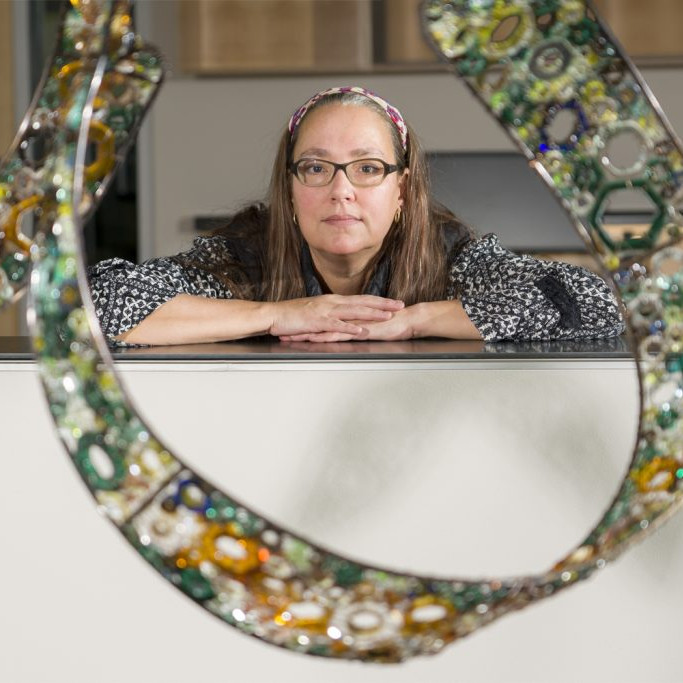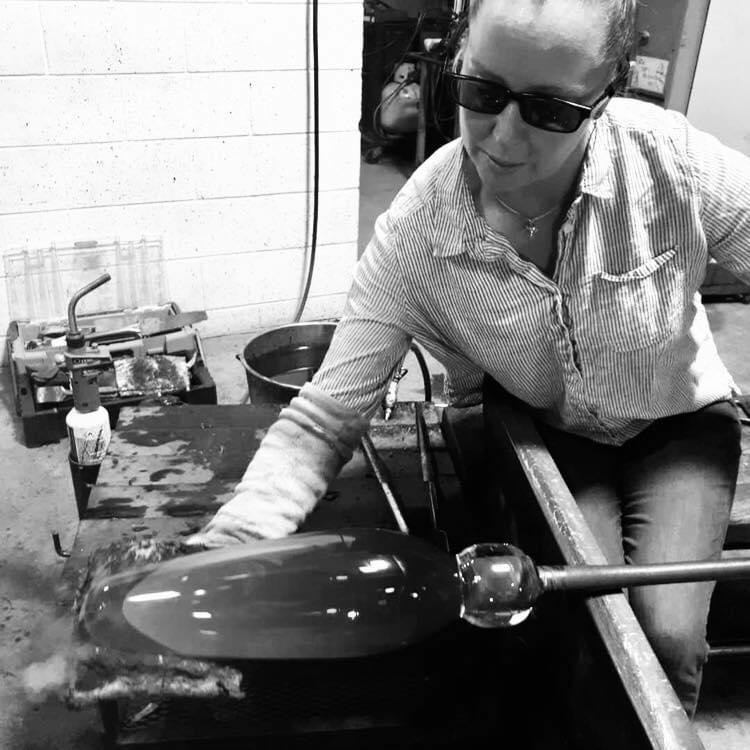Charlotte Sale Glass - London, England.
You first exhibited at the very young age of fourteen. Can you explain how this came about and how did it affect your choices to become an artist?
I was playing around with plastic at school in the art department and asked if I could melt it and bend it and my teacher wasn’t so keen on this idea and sent me to the science department where they made the scientific glass… I was in awe from that day on!
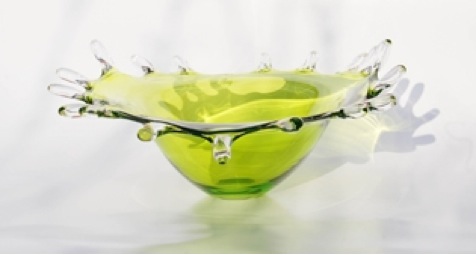
Can you tell us the importance of art school to your art?
Art school is hugely important in finding yourself, and finding your ‘comfort zone’. They allow you to try out all different materials in all different areas. I was taught theatre design and fashion through to graphics and 3D design. There were areas that I loved that didn’t even know existed.
You have always been involved in exhibitions. How have exhibitions helped your artistic development?
Yes I was involved in exhibitions from the day I left University, where they prepare you for exhibitions and getting your work out to the public.
Exhibitions put your work in different settings, as well as they have a ‘theme’ to an exhibition which allows you to develop your work in directions you otherwise may have not considered. Not to mention the colour variations they want from you.
Can you talk about the size of your work and the restriction you have with size?
Blowing glass is an extremely hot and heavy game. All your energy is consumed in one piece from any thing up to a few hours! So when you know you have to make a large piece you either restrict your time to one a day or you get in more assistants to help you manage the scale.
Each of your series is very different while they have very strong links. Do you still produce all of your series or is there a time when you say “no more”?
I have to develop my ideas in the glass hotshop. I find it really difficult working pencil to paper. I always come out with interesting ‘mistakes’ when working with glass and this always develops on to the next series. Yes I produce all my series still – as there is always someone saying I love Deep Blue, can you please make one for me in purple etc. So I like to keep my options open. It is also nice to have variety in my business, otherwise I think you can get a jaded.
In 2005 you developed your “Deep Blue’ series, can you expand on this?
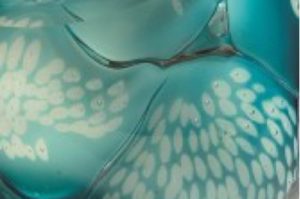
This was inspired by my scuba diving experience in Malaysia – so this series was inspired by the underwater patterns and textures. I used colour overlay and then blew in to different structures to create different textures. I cut through these layers to create different patterns. These were such fun pieces to make. I went in to the hotshop with an idea and came out with something quite the opposite! You do have to be spontaneous in the glass world at times!
By 2009 you were working on “Aqua Lichen” series this is the series where I see the linking with ‘Spritz’ and ‘Acorn’ happening am I correct?
Yes, I was looking at fungus, moss and lichen growing on trees. I was trying to get a detailed texture on a smooth surface. This developed in the hotshop through playing with different tools and creating different ways of applying the texture. I started to apply the texture to different parts of the smooth vessel – which one I got far too hot and spun it really quickly creating the ‘spritz’ series, which I perfected over time. This lead to the Acorn cup and also the Papaver series (below).
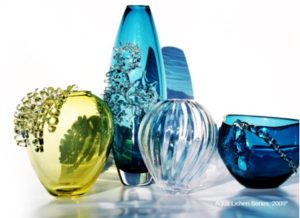
In 2009 – 2010 you also went in a complete different direction. Discuss both series ‘Curiosities’ and ‘Natural Science’ series.
I was asked by a gallery to create some miniatures for their new themed exhibition. This lead to curiosities and then I developed them with gold plated insects in Natural Science. I loved this way of working – with new materials and also working on the torch (which is a smaller scale glass blowing).
Why did you work in clear glass during on these series?
I went back to my scientific glass days and was playing around with borosilicate glass, which is made on a torch/lamp. I wanted to keep it simple as I was working with a lot of colour with the other series. I also thought that bringing in the gold touches would compliment them. I have made some pieces in black to another exhibition I was involved in (image below).
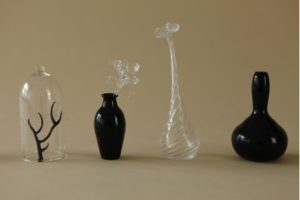
‘Spritz’ series in 2010 – you are still pursuing nature but nothing tactile rather water. How did this come about?
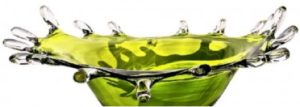
This was a happy accident in the hotshop and I wanted to develop them in to more functional pieces, as well as being decorative, but cutting back on lots of texture, just simple delicate touches.
Again you have introduced colour. How and which colours?
I used all the colours under the sun! I didn’t want to limit myself. I started off making teal, yellow and black and this developed as time when on as my clients were asking if I would make one to match their lounge or dining room… now I am more in to a mix of colours, as you can see on my home page.
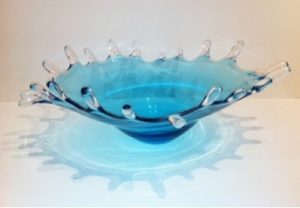
By using colour we still see the water. Why do you think the form over rides the colour?
Glass is a beautiful material, that when you let it do what it wants to do (i.e. the Spritz series) it has so much energy and life about it. I think that the colour comes down to personal environments, but the shape is what draws people in more.
By 2011 you have introduced ‘Acorn Cups’, how did these come about??
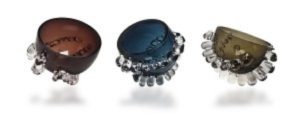
This was developed from an exhibition I did at the Royal College of Art, which was about cups and tactile pieces. It is based on the acorn – the smooth pod in the textured cup and I played around with this idea applying hot glass and snipping it reheating to smooth it off. I liked the way they could sit in any direction, they are fun pieces with their own characters.
What is it about Acorn cups that gives them such a tactile appearance? I want to hold them. While, ‘Spritz’ I am afraid to brake the moment with touch.
I think the fact that the Acorn cups are smaller and made to hold in the hand. Everyone picks them up and wants to play with them. Whereas the Spritz everyone does say ‘I would definitely break that’. The Spritz are finer pieces of glass ware and I think with the droplets coming out, makes the piece slightly more vulnerable. The Acorns are more condense and sturdy.
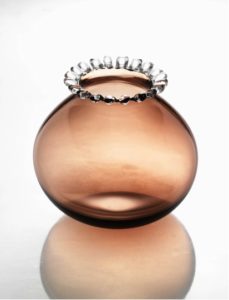
Your work is available throughout the UK and online. Are you interested in selling in other parts of the world?
I have shown and sold my work worldwide, but it always comes down to postage. The postage seems to cost as much as the piece itself. I would love to sell more worldwide… I wish I knew a cheaper courier for worldwide delivery!
Tell us about your studio and the equipment you need?
The glass equipment to make blown glass is very, very expensive and you have to be very dedicated, passionate and willing to throw your whole life into it. I have not got the confidence to do this! So I hire other people’s equipment. It allows me to have days where I need to make and days where I can play around with new ideas. It also takes the pressure off having to cover huge costs every month. I like the fact that I can take a holiday or take on a commission and work on things month by month rather than have to make to pay the bills. It is a slightly more relaxed way of working, but over the years I have realised that it seems to work better this way for me.
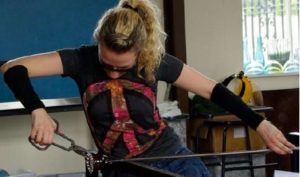
Can you talk about the size of your work and the restriction you have over size?
Restriction is only down to how much I can physically hold, and how large the kiln is! There are always big strong glass blowers willing and able to help out when I need it and going abroad is always an option for larger commissions.
Contact details.
charlotte.sale@network.rca.ac.u
www.charlottesaleglass.com
Charlotte Sale, London, England
Interview by Deborah Blakeley, March, 2013
Think a colleague or friend could benefit from this interview?
Knowledge is one of the biggest assets in any business. So why not forward this on to your friends and colleagues so they too can start taking advantage of the insightful information the artist has given?
Other artists you may be interested in:

